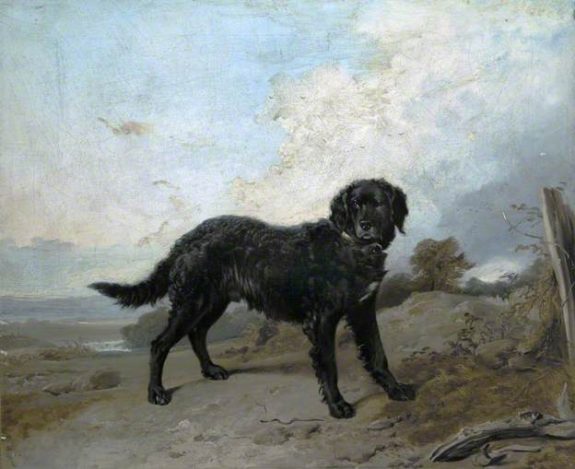
We hazard a guess that most of you reading have had, or currently have, a garment made of tweed.
The rough fabric was originally called “tweel,” the name for the way a weave was produced. Tweel was often the base of diagonal stripes and fishbone patterns. According to legend, however, the word “tweel” was misinterpreted by a London merchant who thought the fabric was named for the textile plants found alongside the Tweed River in the 19th century. The name stuck, and it’s been called tweed ever since.
The Tweed River is 97 miles of great salmon fishing (and, as an aside, the only river in England where an Environment Agency rod license isn’t required for angling). It flows east across the Border region in Scotland and northern England, and historically, farmers in the area commonly wore tweel, the tough and warm fabric obtained from raw Shetland wool. When Prince Albert bought Balmoral Castle in Scotland in 1848, he adopted the local custom of wearing coats made of the fabric, and indeed, Albert may have designed the unique Balmoral tweed, himself. As was so often the case, subjects imitated royalty, and it didn’t take long for each highland estate to make their own “estate tweed” to differentiate themselves during hunting gatherings.
Fabric was not the only thing to take its name from the Tweed River. The Tweed Water Spaniel was a largish dog that lived close to the Scottish border and near the River Tweed (the region of Berwick-upon-Tweed, to be precise). The first written mention of the dog may have been in a letter written by Stanley O’Neil (described as an expert in Flat-coated Retriever). In that letter, he shared his encounter with fishermen netting for salmon, and took note of the dog that was with them. The dog, he was told, was from Berwick, Scotland, and that the breed was thought to have been created by crossing the now-extinct St John’s Water Dog with local water dogs. He wrote, “Further up the coast, probably Alnmouth, I saw men netting for salmon. With them was a dog with a wavy or curly coat. It was a tawny colour but, wet and spumy, it was difficult to see the exact colour, or how much was due to bleach and salt. Whilst my elders discussed the fishing I asked these Northumberland salmon net men whether their dog was a Water-Dog or a Curly, airing my knowledge. They told me he was a Tweed Water Spaniel. This was a new one on me. I had a nasty suspicion my leg was being pulled. This dog looked like a brown Water Dog to me, certainly retrieverish, and not at all spanielly. I asked if he came from a trawler, and was told it came from Berwick.”
We don’t know the exact date of the O’Neil letter, but in 1816, Richard Lawrence wrote about the origins of the Tweed Water Spaniel: “Along rocky shores and dreadful declivities beyond the junction of the Tweed with the sea of Berwick, water dogs have derived an addition of strength, from the introduction of a cross with the Newfoundland dog, which has rendered them completely adequate to the arduous difficulties and diurnal perils in which they are systematically engaged.”
Sadly, the Tweed Water Spaniel itself would became extinct, and to understand why, we must go back to 1865 when Lieutenant-Colonel Dudley Churchill Marjoribanks, the 3rd Baron Tweedmouth, acquired the single yellow puppy born in a litter of black wavy-coated retrievers. He named the boy “Nous,” and later bred him with “Belle,” a Tweed Water Spaniel. Nous and Belle’s first litter resulted in four yellow pups who became the earliest foundation of the Golden Retriever breed. Marjoribanks judiciously added another Tweed Water Spaniel to the main line out of Nous and Belle, as well as a couple of black, wavy coated retrievers and a red setter. After several generations, Marjoribanks had created a consistent line of exceptional working retrievers.
The creation of one breed unwittingly lead to the demise of another. Breeders neglected to preserve the the Tweed Water Spaniel as they used it to produce Golden Retrievers, and numbers dwindled until these excellent water dogs totally vanished in the 19th century.
Image (c)Walker Art Gallery supplied by The Public Catalogue Foundation/Wikimedia Commons
